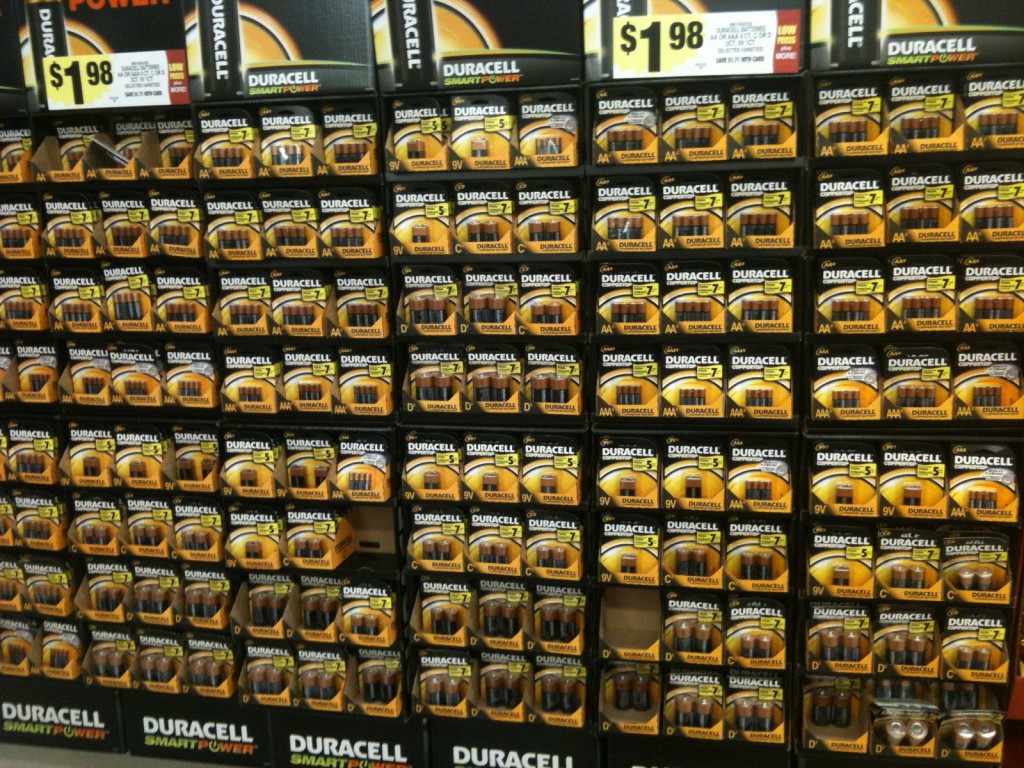Warren Buffett’s company will pay about $3 billion for Duracell. Duracell’s main product is single-use alkaline Zn-MnO2 batteries, although they produce other primary chemistries including a high-power lithium iron disulfide cell. In the rechargeable market they sell three different Ni-MH batteries, in the same familiar form factors as the primary cells: AA, AAA, C, D, and 9V.
In the past few years we’ve been developing rechargeable Zn-MnO2 batteries for large-scale use, such as electrical grid storage. When doing basic Zn-MnO2 research, I often use electrodes produced by our research group, but then repeat the experiments using Duracell batteries. This is to avoid any intellectual property haggles when talking about my research, but also because Duracells are so reliably made that it helps assure me any experiment will be repeatable. In other words, Duracell batteries are a gold standard for Zn-MnO2.
Although Warren Buffett tends to want companies to keep doing what they already do best, the Yahoo Finance article about the deal couldn’t help but mention larger markets Duracell could try to move into:
Still, demand remains for the single-use batteries that power TV remotes, purring animated cats and many other electronic toys. And some experts say there is plenty of opportunity for Duracell if it can find ways to sell more rechargeables and tap into the market for large batteries used in vehicles and on the power grid. With Berkshire Hathaway’s vast resources, which included $62.4 billion cash at the end of September, and its 10 percent stake in Chinese carmaker BYD, it’s tempting to think of this deal as a play on electric vehicles, said Jeff Chamberlain, who helps direct energy storage research at the Argonne National Laboratory.

